-
 Bitcoin
Bitcoin $96,308.9317
-0.50% -
 Ethereum
Ethereum $1,828.4434
-0.42% -
 Tether USDt
Tether USDt $1.0003
0.01% -
 XRP
XRP $2.2069
-0.39% -
 BNB
BNB $598.8395
0.18% -
 Solana
Solana $147.7675
-1.19% -
 USDC
USDC $0.9999
0.00% -
 Dogecoin
Dogecoin $0.1790
-0.83% -
 Cardano
Cardano $0.6967
-2.36% -
 TRON
TRON $0.2493
1.81% -
 Sui
Sui $3.4317
-1.22% -
 Chainlink
Chainlink $14.4374
-2.33% -
 Avalanche
Avalanche $20.9566
-3.24% -
 Stellar
Stellar $0.2721
-1.74% -
 UNUS SED LEO
UNUS SED LEO $8.9181
-0.35% -
 Toncoin
Toncoin $3.1756
-1.58% -
 Shiba Inu
Shiba Inu $0.0...01329
-1.65% -
 Hedera
Hedera $0.1834
-2.60% -
 Bitcoin Cash
Bitcoin Cash $368.5855
-0.23% -
 Hyperliquid
Hyperliquid $20.6779
2.44% -
 Litecoin
Litecoin $87.0567
-1.70% -
 Polkadot
Polkadot $4.1503
-1.80% -
 Dai
Dai $1.0000
0.01% -
 Bitget Token
Bitget Token $4.3835
-0.40% -
 Monero
Monero $275.8060
-3.59% -
 Ethena USDe
Ethena USDe $1.0008
0.02% -
 Pi
Pi $0.5881
-1.02% -
 Pepe
Pepe $0.0...08511
-3.27% -
 Aptos
Aptos $5.3786
-1.98% -
 Uniswap
Uniswap $5.1839
-2.39%
What is zk-SNARKs of blockchain? How to achieve privacy protection?
zk-SNARKs enhance blockchain privacy by enabling shielded transactions and proving smart contract validity without revealing details, crucial for platforms like Zcash.
May 02, 2025 at 11:21 pm
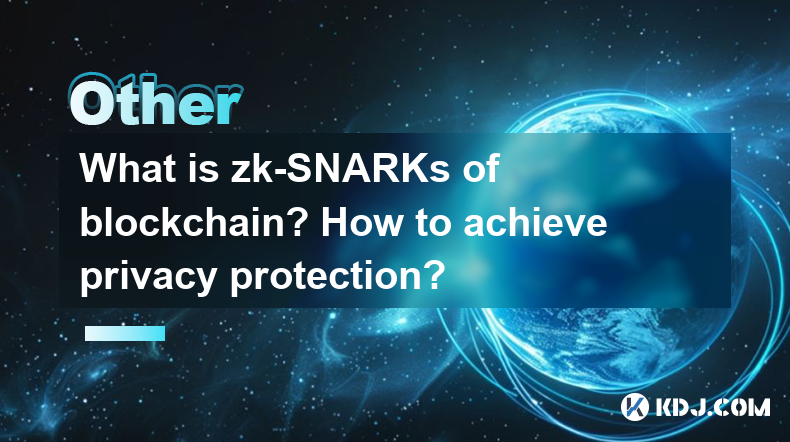
What is zk-SNARKs of Blockchain? How to Achieve Privacy Protection?
Understanding zk-SNARKs in Blockchain
zk-SNARKs, or Zero-Knowledge Succinct Non-Interactive Arguments of Knowledge, are cryptographic protocols that allow one party to prove to another that they possess certain information without revealing the information itself. In the context of blockchain, zk-SNARKs play a crucial role in enhancing privacy and security. They enable the verification of transactions in a way that keeps the details confidential, making them an essential tool for privacy-focused cryptocurrencies like Zcash.
How zk-SNARKs Work
zk-SNARKs operate on the principle of zero-knowledge proofs, where one party (the prover) can convince another party (the verifier) that a statement is true without conveying any additional information. In a blockchain transaction, zk-SNARKs allow a user to prove that they have the necessary funds to make a transaction without revealing their balance or the transaction amount. This is achieved through a series of complex mathematical operations that generate a proof, which can be verified without revealing the underlying data.
The Components of zk-SNARKs
zk-SNARKs consist of three main components: the setup, the proving phase, and the verification phase. During the setup, a common reference string is generated, which is used by both the prover and the verifier. In the proving phase, the prover uses this reference string to create a proof that a certain statement is true. Finally, in the verification phase, the verifier uses the same reference string to check the validity of the proof without learning any additional information.
Achieving Privacy Protection with zk-SNARKs
Privacy protection in blockchain is achieved through the use of zk-SNARKs in several ways. Firstly, zk-SNARKs enable shielded transactions, where the sender, receiver, and transaction amount are hidden from public view. This means that while the transaction is recorded on the blockchain, the details remain confidential. Secondly, zk-SNARKs can be used to prove the validity of smart contracts without revealing their logic or execution details, adding an additional layer of privacy.
Implementing zk-SNARKs in Blockchain Platforms
To implement zk-SNARKs in a blockchain platform, several steps need to be followed. Here is a detailed guide on how to achieve this:
Choose a Suitable Library: Start by selecting a library that supports zk-SNARKs, such as libsnark or ZoKrates. These libraries provide the necessary tools to generate and verify proofs.
Generate the Common Reference String: Use the chosen library to generate a common reference string. This step is crucial and must be done securely to prevent any potential vulnerabilities.
Create the Proving Circuit: Define the proving circuit, which represents the statement that needs to be proven. This circuit will be used to generate the proof.
Generate the Proof: Using the proving circuit and the common reference string, generate the proof. This proof will be used to convince the verifier that the statement is true.
Verify the Proof: The verifier uses the same common reference string to check the validity of the proof. If the proof is valid, the verifier can be assured that the statement is true without learning any additional information.
Challenges and Considerations
Implementing zk-SNARKs in blockchain systems comes with its own set of challenges. One major challenge is the computational complexity involved in generating and verifying proofs. This can lead to increased transaction times and higher resource usage. Additionally, the security of the common reference string is critical, as any compromise can lead to vulnerabilities in the system. It is essential to follow best practices and use secure methods to generate and store this string.
Real-World Applications of zk-SNARKs
zk-SNARKs have been successfully implemented in several real-world blockchain projects. One of the most notable examples is Zcash, which uses zk-SNARKs to provide fully shielded transactions. Another example is Tornado Cash, a decentralized mixer that uses zk-SNARKs to enhance privacy on the Ethereum network. These applications demonstrate the practical benefits of zk-SNARKs in achieving privacy protection in blockchain systems.
Frequently Asked Questions
Q1: Can zk-SNARKs be used in any blockchain platform?
A1: While zk-SNARKs can be implemented in various blockchain platforms, the feasibility depends on the platform's architecture and the resources available. Platforms like Ethereum have seen successful implementations, but each case requires careful consideration of the technical requirements and potential challenges.
Q2: How do zk-SNARKs affect the scalability of a blockchain?
A2: zk-SNARKs can impact scalability due to the computational overhead involved in generating and verifying proofs. However, ongoing research and development aim to optimize these processes, potentially reducing their impact on scalability.
Q3: Are there any alternatives to zk-SNARKs for achieving privacy in blockchain?
A3: Yes, there are alternatives such as zk-STARKs and ring signatures. zk-STARKs offer similar privacy benefits without the need for a trusted setup, while ring signatures are used in cryptocurrencies like Monero to obscure the sender's identity.
Q4: How secure are zk-SNARKs?
A4: zk-SNARKs are considered secure when implemented correctly. The security relies heavily on the integrity of the common reference string and the complexity of the underlying mathematical problems. Proper implementation and adherence to best practices are essential to maintain their security.
Disclaimer:info@kdj.com
The information provided is not trading advice. kdj.com does not assume any responsibility for any investments made based on the information provided in this article. Cryptocurrencies are highly volatile and it is highly recommended that you invest with caution after thorough research!
If you believe that the content used on this website infringes your copyright, please contact us immediately (info@kdj.com) and we will delete it promptly.
- Could the Next Viral Meme Coin Be the Ticket to Unprecedented Returns?
- 2025-05-03 14:40:12
- 2025's Massive Burn, 18B Tokens Gone for Good – Arctic Pablo Creates Scarcity While Mog and Mubarak Expand Their Horizons
- 2025-05-03 14:40:12
- Brown University Becomes the First Ivy League Institution to Invest in Bitcoin
- 2025-05-03 14:35:13
- Pi Network Now Lets Users with Partial KYC Activate Mainnet Wallets Instantly.
- 2025-05-03 14:35:13
- Is a New Crypto About to Pounce? Troller Cat (TCAT) Emerges as a Contender
- 2025-05-03 14:30:12
- Bitget Completes the Burn for 30 Million Bitget Token (BGB) as per Its Previously Shared Burn Mechanism Plan
- 2025-05-03 14:30:12
Related knowledge

What is zk-Rollup for blockchain? How to improve privacy?
Apr 29,2025 at 06:36pm
Introduction to zk-Rollupzk-Rollup is a layer-2 scaling solution designed to enhance the scalability and privacy of blockchain networks. It operates by bundling multiple transactions off-chain into a single transaction that is then recorded on the main blockchain. This method significantly reduces the load on the blockchain, allowing for faster and chea...

What is random number generation for blockchain? Why is it critical?
Apr 27,2025 at 09:07pm
Random number generation (RNG) in the context of blockchain technology is a crucial component that plays a significant role in ensuring the security, fairness, and unpredictability of various blockchain operations. RNG is used in a variety of applications within the blockchain ecosystem, such as generating cryptographic keys, creating unique addresses, ...
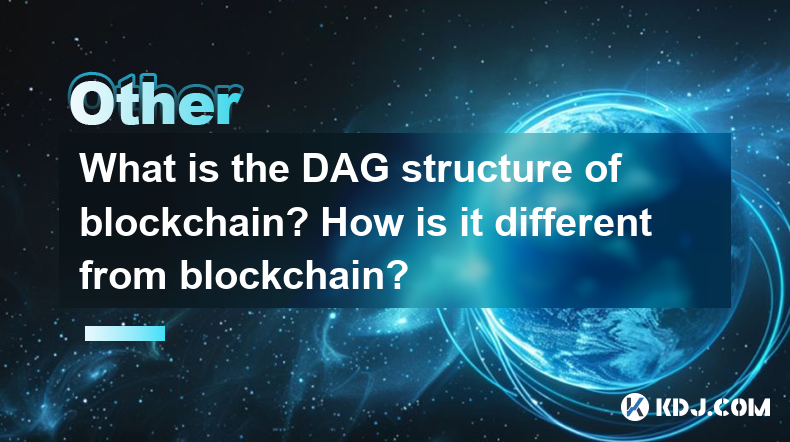
What is the DAG structure of blockchain? How is it different from blockchain?
Apr 27,2025 at 08:56pm
The Directed Acyclic Graph (DAG) structure represents a fascinating alternative to traditional blockchain technology within the cryptocurrency ecosystem. DAG is a type of data structure that is used in several cryptocurrencies to enhance scalability and transaction speed. Unlike traditional blockchains, which rely on a linear chain of blocks, DAGs emplo...
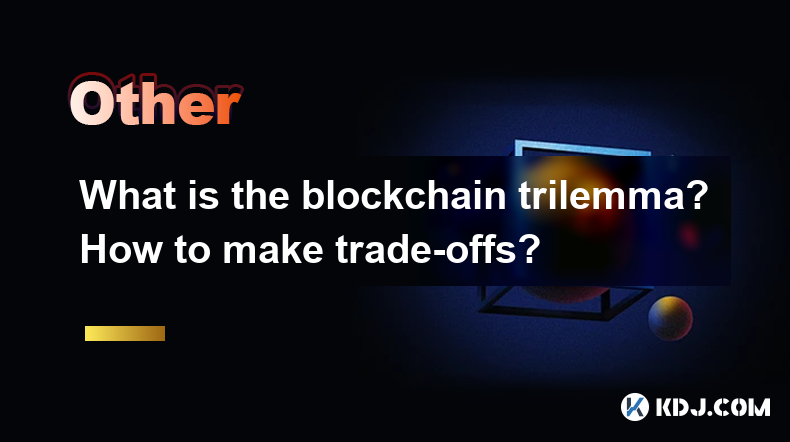
What is the blockchain trilemma? How to make trade-offs?
Apr 27,2025 at 08:15pm
The blockchain trilemma is a fundamental concept in the world of cryptocurrencies and blockchain technology. It refers to the challenge of achieving three key properties simultaneously: scalability, security, and decentralization. These three aspects are crucial for the success and widespread adoption of any blockchain network. However, achieving all th...
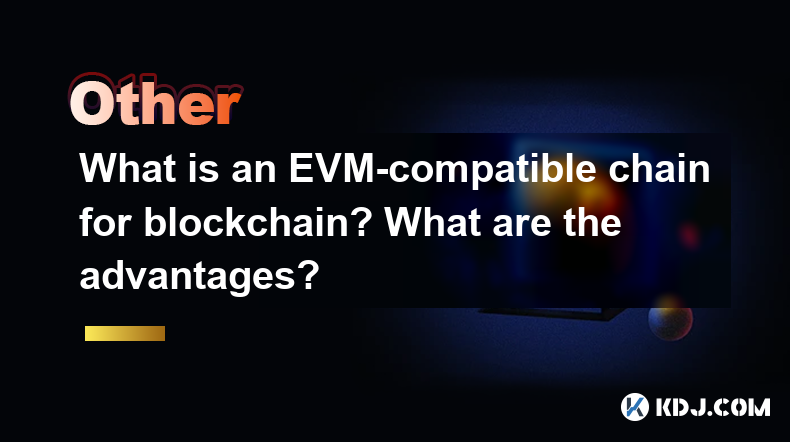
What is an EVM-compatible chain for blockchain? What are the advantages?
Apr 30,2025 at 01:57am
An EVM-compatible chain refers to a blockchain that supports the Ethereum Virtual Machine (EVM). The EVM is a crucial component of the Ethereum network, allowing smart contracts to be executed in a decentralized manner. By being EVM-compatible, other blockchains can run Ethereum's smart contracts and decentralized applications (dApps) natively, thereby ...
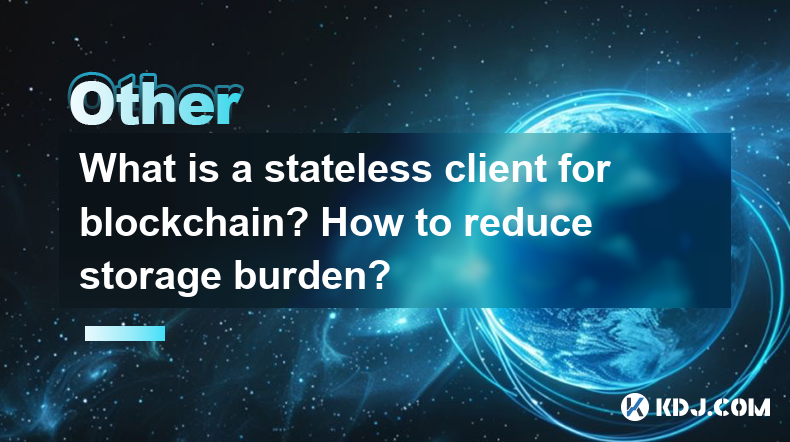
What is a stateless client for blockchain? How to reduce storage burden?
Apr 27,2025 at 08:01pm
A stateless client for blockchain refers to a type of software that interacts with a blockchain network without the need to store the entire state of the blockchain. This approach significantly reduces the storage burden on individual nodes, making it more feasible for devices with limited resources to participate in the network. In this article, we wil...

What is zk-Rollup for blockchain? How to improve privacy?
Apr 29,2025 at 06:36pm
Introduction to zk-Rollupzk-Rollup is a layer-2 scaling solution designed to enhance the scalability and privacy of blockchain networks. It operates by bundling multiple transactions off-chain into a single transaction that is then recorded on the main blockchain. This method significantly reduces the load on the blockchain, allowing for faster and chea...

What is random number generation for blockchain? Why is it critical?
Apr 27,2025 at 09:07pm
Random number generation (RNG) in the context of blockchain technology is a crucial component that plays a significant role in ensuring the security, fairness, and unpredictability of various blockchain operations. RNG is used in a variety of applications within the blockchain ecosystem, such as generating cryptographic keys, creating unique addresses, ...

What is the DAG structure of blockchain? How is it different from blockchain?
Apr 27,2025 at 08:56pm
The Directed Acyclic Graph (DAG) structure represents a fascinating alternative to traditional blockchain technology within the cryptocurrency ecosystem. DAG is a type of data structure that is used in several cryptocurrencies to enhance scalability and transaction speed. Unlike traditional blockchains, which rely on a linear chain of blocks, DAGs emplo...

What is the blockchain trilemma? How to make trade-offs?
Apr 27,2025 at 08:15pm
The blockchain trilemma is a fundamental concept in the world of cryptocurrencies and blockchain technology. It refers to the challenge of achieving three key properties simultaneously: scalability, security, and decentralization. These three aspects are crucial for the success and widespread adoption of any blockchain network. However, achieving all th...

What is an EVM-compatible chain for blockchain? What are the advantages?
Apr 30,2025 at 01:57am
An EVM-compatible chain refers to a blockchain that supports the Ethereum Virtual Machine (EVM). The EVM is a crucial component of the Ethereum network, allowing smart contracts to be executed in a decentralized manner. By being EVM-compatible, other blockchains can run Ethereum's smart contracts and decentralized applications (dApps) natively, thereby ...

What is a stateless client for blockchain? How to reduce storage burden?
Apr 27,2025 at 08:01pm
A stateless client for blockchain refers to a type of software that interacts with a blockchain network without the need to store the entire state of the blockchain. This approach significantly reduces the storage burden on individual nodes, making it more feasible for devices with limited resources to participate in the network. In this article, we wil...
See all articles




















































































